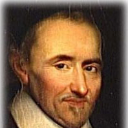- Home
- /
- Programming
- /
- Programming
- /
- Using markerchar to plot a repeated string
- RSS Feed
- Mark Topic as New
- Mark Topic as Read
- Float this Topic for Current User
- Bookmark
- Subscribe
- Mute
- Printer Friendly Page
- Mark as New
- Bookmark
- Subscribe
- Mute
- RSS Feed
- Permalink
- Report Inappropriate Content
I'm trying to use the following code to replicate XKCD's Binary Heart comic:
/* generate random binary heart similar to xkcd comic: http://xkcd.com/99/ */
data BinaryHeart;
drop Nx Ny t r;
Nx = 21; Ny = 23;
call streaminit(2142015);
do x = -2.6 to 2.6 by 5.2/(Nx-1);
do y = -4.4 to 1.5 by 6/(Ny-1);
/* convert (x,y) to polar coordinates (r, t) */
r = sqrt( x**2 + y**2 );
t = atan2(y,x);
/* eqn: blogs.sas.com/content/iml/2011/02/14/a-parametric-view-of-love/ */
Heart= (r < 2 - 2*sin(t) + sin(t)*sqrt(abs(cos(t))) / (sin(t)+1.4))
& (y > -3.5);
B = rand("Bernoulli", 0.5);
output;
end;
end;
run;
ods graphics / width=400px height=500px;
title "Happy Valentine's Day";
proc sgplot data=BinaryHeart noautolegend;
styleattrs datacontrastcolors=(lightgray red);
scatter x=x y=y / group=Heart markerchar=B markercharattrs=(size=10);
xaxis display=none offsetmin=0 offsetmax=0.06;
yaxis display=none;
run;
I'd love to swap out the random binary for a specific binary string, but can't quite figure out the spacing. When I use the following, all the numbers overlap, but when I try to add spacing I get an error that SAS was expecting an arithmetic operator.
/* generate random binary heart similar to xkcd comic: http://xkcd.com/99/ */ data BinaryHeart; drop Nx Ny t r; Nx = 21; Ny = 23; call streaminit(2142015); do x = -2.6 to 2.6 by 5.2/(Nx-1); do y = -4.4 to 1.5 by 6/(Ny-1); /* convert (x,y) to polar coordinates (r, t) */ r = sqrt( x**2 + y**2 ); t = atan2(y,x); /* eqn: blogs.sas.com/content/iml/2011/02/14/a-parametric-view-of-love/ */ Heart= (r < 2 - 2*sin(t) + sin(t)*sqrt(abs(cos(t))) / (sin(t)+1.4)) & (y > -3.5); B=(0110110101101111011011000110110001111001); output; end; end; run; ods graphics / width=400px height=500px; title "Happy Valentine's Day"; proc sgplot data=BinaryHeart noautolegend; styleattrs datacontrastcolors=(lightgray red); scatter x=x y=y / group=Heart markerchar=B markercharattrs=(size=10); xaxis display=none offsetmin=0 offsetmax=0.06; yaxis display=none; run;
- Mark as New
- Bookmark
- Subscribe
- Mute
- RSS Feed
- Permalink
- Report Inappropriate Content
I guess you want to cycle on the elements of your binary string, like this:
/* generate random binary heart similar to xkcd comic: http://xkcd.com/99/ */
data BinaryHeart;
drop Nx Ny t r i;
length B $1;
Nx = 21; Ny = 23;
*call streaminit(2142015);
i = 0;
str = "0110110101101111011011000110110001111001";
do x = -2.6 to 2.6 by 5.2/(Nx-1);
do y = -4.4 to 1.5 by 6/(Ny-1);
/* convert (x,y) to polar coordinates (r, t) */
r = sqrt( x**2 + y**2 );
t = atan2(y,x);
/* eqn: blogs.sas.com/content/iml/2011/02/14/a-parametric-view-of-love/ */
Heart= (r < 2 - 2*sin(t) + sin(t)*sqrt(abs(cos(t))) / (sin(t)+1.4))
& (y > -3.5);
*B = rand("Bernoulli", 0.5);
B = substr(str, 1+mod(i,length(str)), 1);
i + 1;
output;
end;
end;
run;
ods graphics / width=400px height=500px;
title "Happy Valentine's Day";
proc sgplot data=BinaryHeart noautolegend;
styleattrs datacontrastcolors=(lightgray red);
scatter x=x y=y / group=Heart markerchar=B markercharattrs=(size=10);
xaxis display=none offsetmin=0 offsetmax=0.06;
yaxis display=none;
run;
Playing with the length of the binary string will generate different patterns.
April 27 – 30 | Gaylord Texan | Grapevine, Texas
Registration is open
Walk in ready to learn. Walk out ready to deliver. This is the data and AI conference you can't afford to miss.
Register now and lock in 2025 pricing—just $495!
Learn how use the CAT functions in SAS to join values from multiple variables into a single value.
Find more tutorials on the SAS Users YouTube channel.
SAS Training: Just a Click Away
Ready to level-up your skills? Choose your own adventure.




